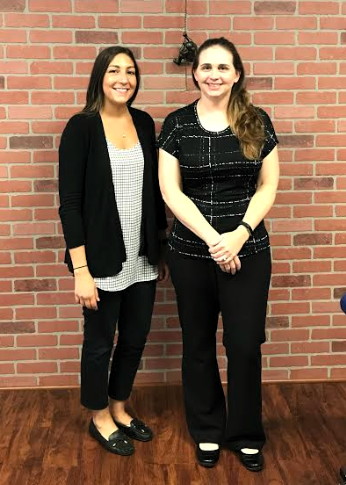By Dr. Nichole Chaviano, D.P.T.
Physical therapists are experts in movement, helping those with a wide range of problems to restore mobility, reduce pain and remain active. There are some widely-held misconceptions around physical therapy that may discourage people who could gain a great deal from seeking treatment. People assume they need a doctor’s referral to schedule an initial physical therapy evaluation, that physical therapy is only for the elderly or injured, that medication or surgery is their only hope for relief, that physical therapists aren’t highly-trained medical professionals, or that physical therapy is never a viable standalone option. These are myths. In fact, within their range of expertise physical therapists can provide care and proven benefit for patients in all stages of healing from initial diagnosis through the rehabilitation process, and can even provide support to prevent a recurrence of various conditions.
When patients begin treatment with a physical therapist, which in New Jersey does not require a doctor’s referral, they can expect a thorough physical examination and review of their health history, including an evaluation of their muscle and joint performance, posture, and flexibility as appropriate. His/her physical therapist will likely be a Doctor of Physical Therapy who has completed a four-year bachelor’s degree and three or more years of graduate-level training. He/she will draw on his/her expertise in anatomy, physiology, and neuromuscular and musculoskeletal pathology to provide their patients with a clinical diagnosis and discuss their prognosis, as well as provide a recommended plan of care and goals. In subsequent appointments he/she will provide ongoing treatment and intervention and offer an exercise plan or other self-management recommendations to support their patient’s therapy goals.
People are often surprised to learn the wide range of issues that can benefit from physical therapy. Despite stereotypes to the contrary, it is not just for the injured or the elderly. While there are certainly benefits to those who have musculoskeletal injuries and for older patients who have conditions that limit their mobility or physical function, physical therapy has a wide range of additional applications. It can also help people with neurological disorders, cardiovascular and pulmonary conditions, pediatric conditions, healing wounds, concussions, balance issues, or congestive conditions that result in fluid accumulation. It can also be used to manage pain and reduce dependence on opioids; help patients avoid surgery; improve athletic performance; prevent falls; increase mobility and movement; or aid in recovery from stroke, paralysis, trauma and more.
Although people are often convinced that medication or surgery are their only route to relief for various conditions, this is not necessarily the case. Physical therapy can provide relief for the management of most non-cancer related pain through manual therapy and targeted exercise. In addition, it can often provide an alternative that can be as effective as surgery in many cases, for conditions ranging from a torn anterior cruciate ligament (ACL) to degenerative disk disease, to shoulder, knee or lower back pain. And, even if a patient ultimately decides to undergo surgery for these conditions, physical therapy will help him/her to increase their strength and mobility, improving their prognosis and postoperative outcomes.
Finally, it is a mistake view physical therapy’s role in improving health conditions as somehow limited, secondary to, or less than other clinical interventions. Amanda Richardson, a physical therapy patient who was diagnosed in March with primary lateral sclerosis, describes her reaction when her physicians informed her that for this chronic condition she could “only really do physical therapy.” At first she was crushed. “When you hear the word ‘only,’ you kind of feel defeated because you think, well, that’s not really going to have any measurable results. You know, how can something ‘only’ be good enough?” Yet, despite her originally low expectations, Richardson found herself extremely pleased with the results she has achieved with “only” physical therapy. “There’s nothing only about physical therapy,” she said.
Of the staff at ProFysio Physical Therapy in East Brunswick, where she has been treated since her diagnosis, she observes, “They have a vast knowledge of how the human body works and muscles and joints. They also are designers. They design programs for everybody’s needs whether they’ve been injured or they’re athletes or they’re like me with a chronic condition. They’re always motivating and very challenging.” And her results speak for themselves. “I can balance for a little bit. I’ve actually gotten some strength back. [Makes a fist and points to bicep] I haven’t seen these guns in a while!”
A wide range of research and statistical evaluations demonstrate that, despite what you may have heard or thought, a well-trained Doctor of Physical Therapy can provide effective treatment for a wide range of conditions, often at significantly reduced cost for patients. If you suffer from any of the conditions mentioned here, you’d be doing yourself a favor to add a physical therapy evaluation into the mix of your care plan. It will probably do you a world of good.
Dr. Nichole Chaviano serves as the clinical director of ProFysio Physical Therapy’s East Brunswick location. She earned her Doctorate in Physical Therapy from Rutgers University, and is experienced in a variety of orthopedic conditions with manual therapy techniques and therapeutic exercise.
ProFysio Physical Therapy is located at 510 Route 18 North, East Brunswick; in the Browntown Plaza at 2665 Route 516, Old Bridge; at 2124 Route 35 South at the Laurel Avenue intersection in the Holmdel Medical Center, Holmdel; and at 1212 Route 34, Suites 24-25, Aberdeen. Call 732-554-8330 to schedule an evaluation.

